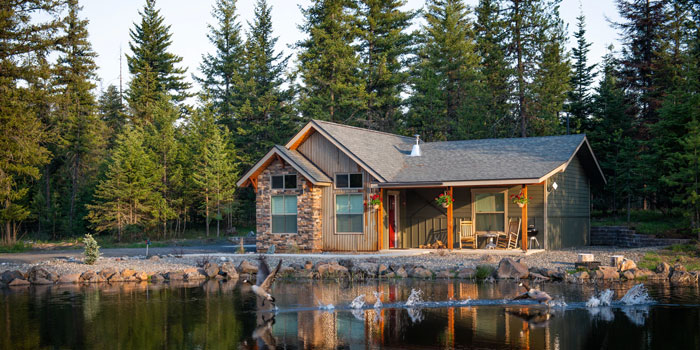
For many prospective buyers, a recreational property represents an escape hatch from city life, a place to enjoy weekends and vacations with family and friends. But does the investment end there, or can purchasers also count on their cottage paying off financially?
Although the majority of Canadians — nearly two-thirds — see their cottage as a place they can go to relax and spend time with friends and family, 30 per cent also consider their recreational property to be an investment, according to the RE/MAX 2019 Recreational Property Trends survey.
Essentially, says Cam White, sales representative with Chestnut Park Real Estate in Port Carling, part of Ontario’s Muskoka region, a cottage or recreational property can be considered both — an appreciating investment that pays lifestyle dividends.
In the case of this lifestyle investment, he says, the supply is limited – and there are also a few demographic trends at play.
“They aren’t making any more waterfront. It is a limited supply. So simple economics, if you limit supply, it puts upward pressure on pricing and that’s one of the trends we’re seeing now, reduced inventory since 2014 throughout cottage country,” says White.
“We think that’s going to continue for a bit longer before we start seeing boomers that can no longer make it here or manage their property and then we might start to see the supply start to grow a bit again,” he adds.
According to Royal LePage’s 2019 Canadian recreational property report, in most of the country, young families are competing with baby boomers for homes in popular recreational property regions — in Ontario’s cottage country, for example, low inventory led to a 7.2 per cent price gain in the year leading up to the 2019 spring market.
As White notes, cottage owners in Muskoka, for example, have seen significant appreciation, especially in the last ten years. At the moment, he says, the market for properties over $3 million in the area is growing, resulting in “good deals” for buyers. Below that price point, he says, inventory is low, which is creating more buyer competition.
At the same time, he explains, in an area where property prices can range from $500,000 to $15 million, the concept of an ‘average price’ and whether it is rising or falling can be difficult to measure, depending on which segment of the market buyers are favouring.
In addition to appreciation, buyers may use a recreational property to generate income. One key question for potential buyers at the outset, says Mark Walker, a sales representative with Royal LePage in Kelowna, B.C., is whether they plan to use the property themselves, or rent it out. Each use brings different considerations.
In B.C.’s central Okanagan region – which Royal LePage says is the most popular region for recreational property buyers in the province — reasonable prices are a draw with a number of buyers choosing to purchase condo or strata-type properties near ski resorts.
“I’d say they’re slightly lower [appreciation] than your principal residence or other product on the market when it comes to condos, but is it’s very turnkey, which people like,” he says.
On the rental side, he says, buyers will have to decide whether to self-manage or hire a property management company. If they are part of a rental pool on a ski hill, they should request to review a five-year record of revenue, for example. Buyers also should keep in mind that the more remote the property, the less of a rental market they may be able to attract, says Walker.
There may also be considerations with respect to obtaining a mortgage.
“There’s an expectation of a larger down payment, generally, unless you have a great relationship with your bank. We see challenges when the properties are zoned nightly, the bank definitely looks at those in a different way, slightly more volatile, so they’re asking for a larger down payment in most cases then you’d get as just a straight condo,” says Walker.
For those who want to have use of their recreational property rather than purchase it specifically as a revenue investment, Walker says this “definitely comes with a different consequence in terms of the ROI and how it plays out as an investment over, say, just a normal rental revenue property that you might buy.”
For example, they will be responsible for costs such as strata fees, taxes and mortgage payments, if applicable, without necessarily being able to offset these with rental income.
At the same time, he says, with the affordability and lifestyle of a ‘ski in and ski out’ property, “there’s definitely a draw there and some people just want to raise their kids and have a great lifestyle and then move on later on in life.”







